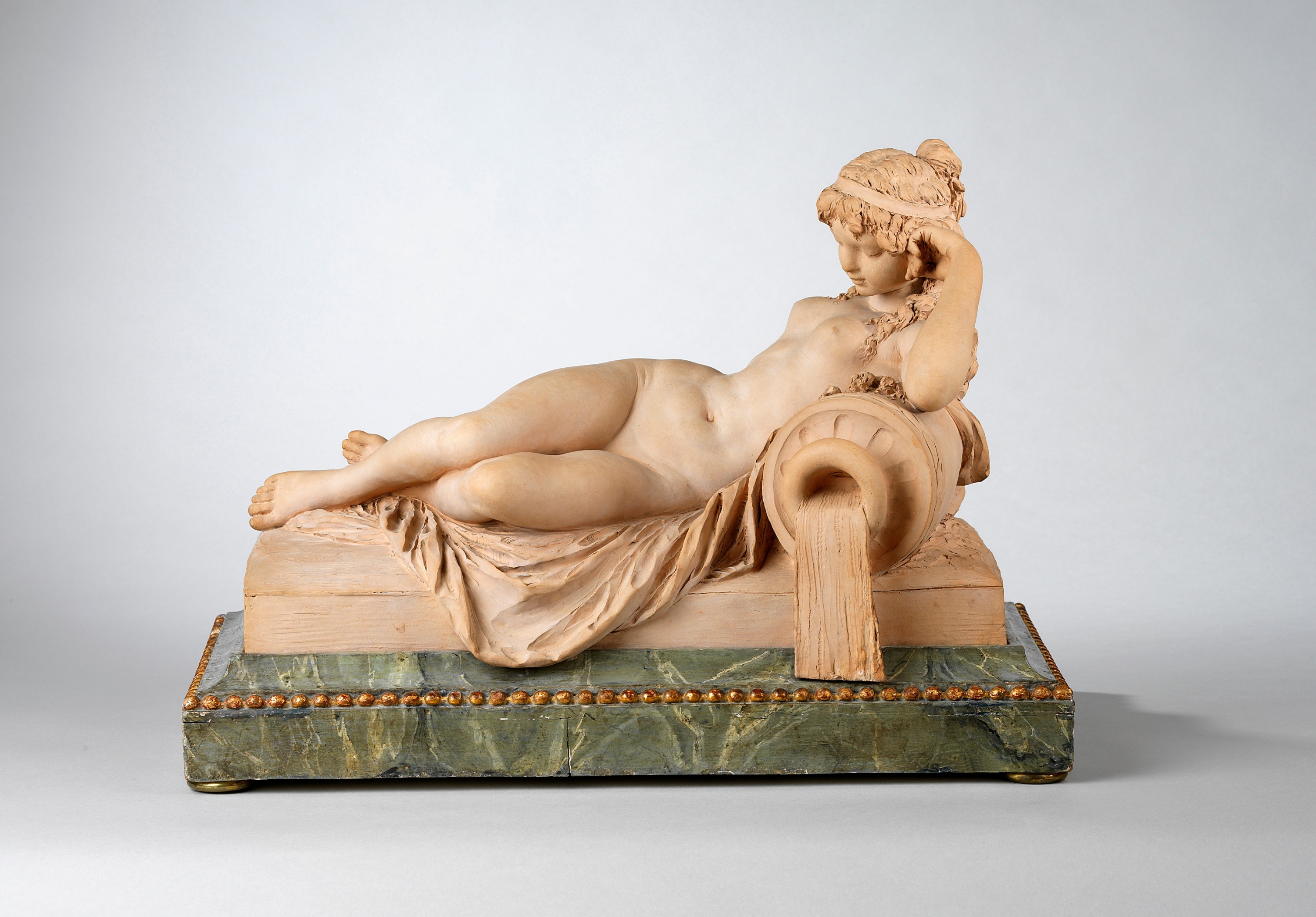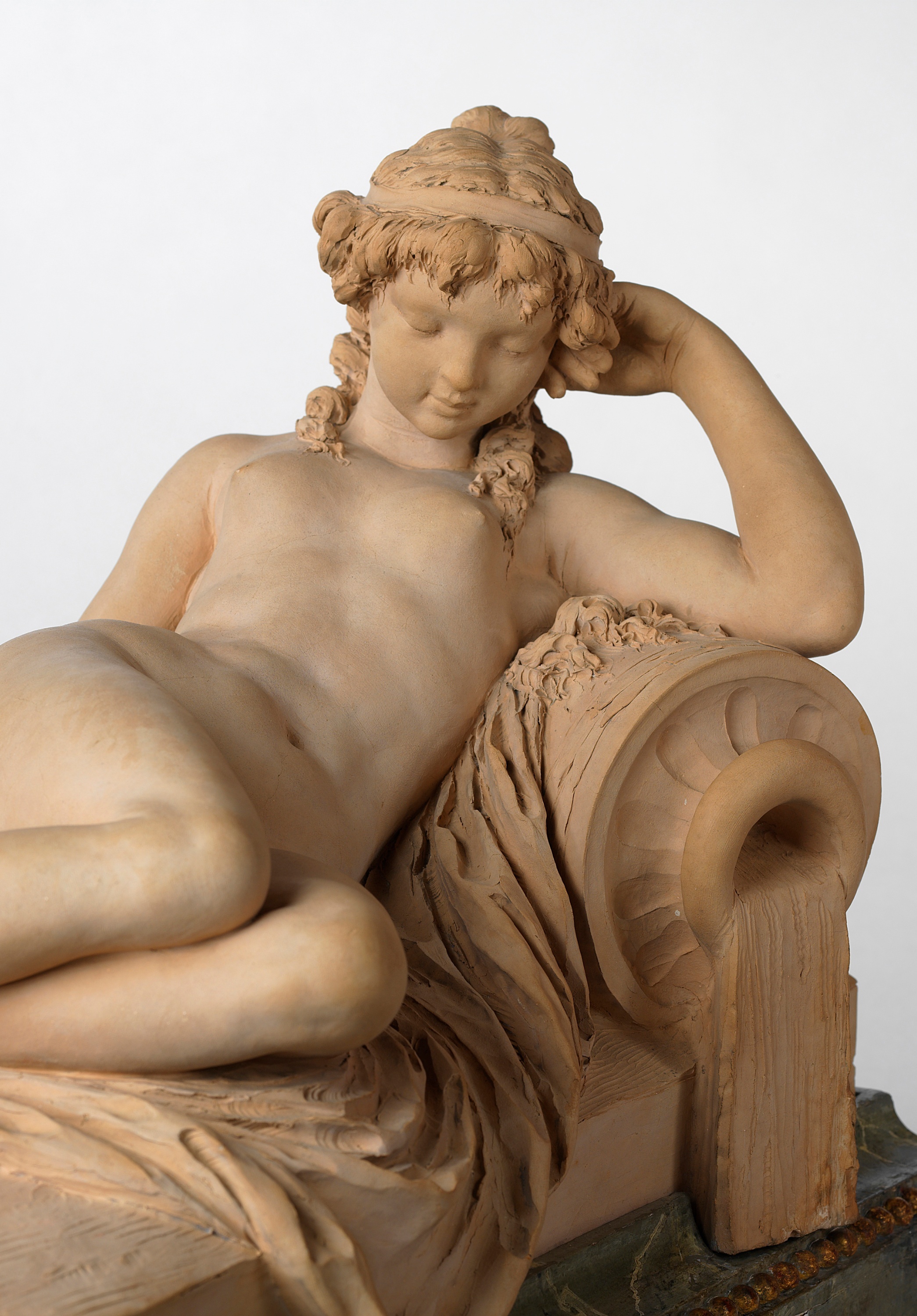

Circa 1790


Claude Michel or Clodion (1738 – 1814) was born in Nancy. He was the nephew and pupil of Lambert Sigisbert Adam and also related to the sculptor Augustin Pajou, marrying his daughter, Catherine-Flore in 1764. He worked briefly for the sculptor Pigalle and then in 1759, won the Grand Prix de Sculpture. As a result he went in 1762 to Rome where he remained until 1771, attracting the attention of numerous patrons including Catherine II of Russia. On his return to Paris he was an immediate success and in 1773 was accepted into the Academie, although he never became a full academician. He executed some monumental commissions, and his statue of Montesquieu is remarkable, but he mostly worked on a small scale in terracotta producing groups of figures. Francis Watson (1973, pp. 413-4) says of him that “he had the gift of imparting an extraordinary sensuousness and charm to figures that other neoclassic sculptors… treated with colder orthodoxy”. He certainly did not conform to the current neo-classical artistic pattern and placed an overwhelming emphasis on movement, excitement and texture.
His work was enormously popular and his workshops produced many versions of particular models, a practice which earned the disapproval of his contemporaries. He was accused of setting up a workshop “comme un simple maître de la corporation de Saint Luc”. He also formed a company with the dealer Verrier and the bronze caster Dubois, dissolved in 1783, to produce bronze versions of his work.
| DIMENSIONS | CM | INCHES |
|---|---|---|
| Width: | 45.5 | 18 |
| Depth: | 25.5 | 10 |
| Height: | 33 | 13 |